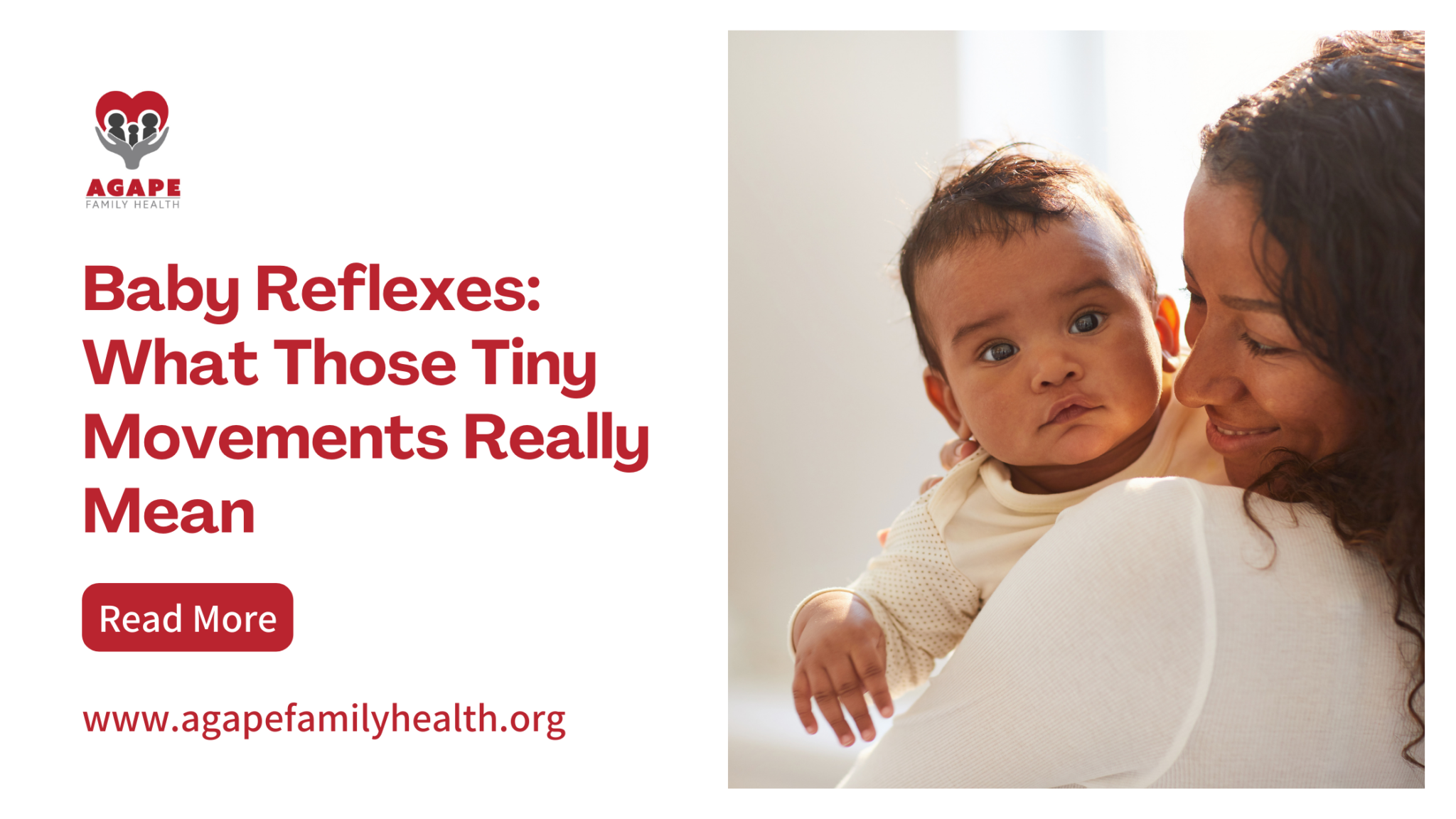Did you know newborns show over 70 baby reflexes? These movements are crucial for baby’s first months, showing their health and needs. We will look at these reflexes, what they mean, and how to help your baby grow. Newborns are amazing from the start. They have many reflexes that are key to their early growth. These reflexes are like automatic reactions, helping them adjust to their new world. This article is your guide to baby’s reflexes. We will talk about the types and how they help your baby grow. Whether you’re a new parent or just interested in babies, this guide is for you.
Understanding Baby Reflexes
Baby reflexes, known as newborn or infant reflexes, are automatic responses babies show soon after birth. These responses are natural and help babies adjust to their new world. They are the body’s way of reacting to things around them.
These reactions are important for a baby’s survival. They help in areas such as feeding, protecting, and keeping balanced. By knowing about these reflexes, parents and caregivers can help babies grow well. A baby’s reflexes show the early part of their brain and body development. Even though born, a baby’s brain and nervous system are not fully developed. Over time, these basic responses turn into more complex movements and thinking skills. Watching a baby’s reflexes can tell a lot about their health and growth. Doctors look at these during check-ups. They check to make sure everything is developing as it should.
Learning about baby reflexes is crucial for parents. It helps them know what their baby needs. With this knowledge, they can take better care of their child.
Rooting Reflex
The rooting reflex is a well-known baby reflex. It’s easy to see and very important. This reflex helps babies deal with their new world and meet their needs.
A baby shows the rooting reflex when you touch their cheek or mouth. They turn their head towards the touch and open their mouth. They look for something to eat, showing where their food source is. This reflex starts a few weeks after birth, sometimes even hours later. It shows the baby’s brain and body are healthy. It comes from a basic part of the brain that looks after simple functions.
Understanding the rooting reflex is great for new parents. By gently touching a baby’s mouth or cheeks, they can help the baby find their food. This makes feeding easier and a more positive experience for both parents and baby. The rooting reflex isn’t just about eating. It can also signal if a baby is healthy. A weak or missing rooting reflex might be a sign of a health issue. It’s important to have a doctor check this.
In short, the rooting reflex is critical for a baby’s start in life. Parents who know about it can better help their child feed and grow. They also learn a lot about their baby’s health and learning journey through this reflex.
Sucking Reflex

The sucking reflex is key for feeding your baby. It’s linked with the rooting reflex. This happens when a baby’s lips or mouth are touched. Then, your baby will start to suck to get the food they need to grow. This reflex shows up quickly, within hours of birth. It’s crucial for feeding, either from the breast or a bottle. But, it also tells us about a baby’s nerve development and health.
When babies suck, they move their lips, tongue, and jaw together. This helps them drink milk from the breast or a bottle. Even premature babies will start to suck when they’re ready to feed. The sucking reflex has two types: nutritive and non-nutritive. Nutritive sucking is for food, while non-nutritive is for comfort. This might be sucking on a pacifier or fingers.
Both types are helpful for the baby. Nutritive sucking gives them the food they need. Non-nutritive sucking helps calm and comfort them. As babies get older, their sucking action changes. They start with a strong suck that turns smoother over time. This shows their growth and needs.
Nurturing your baby’s sucking reflex is important for bonding and health. Letting your baby suck, either during feeding or with a pacifier, is good. It supports their well-being and development.
Other Baby Reflexes
Aside from rooting and sucking, babies have other reflexes worth knowing. The Moro, palmar grasp, Babinski, and stepping reflexes are key ones. These reflexes help babies get used to their world and show how their brain is growing.
The Moro reflex happens when a baby thinks it’s falling. They throw their arms out and then bring them back. This reflex stops by 2-4 months old as the baby’s brain gets stronger. At birth, if you touch a baby’s palm, they’ll grab your finger or a bottle. This is the palmar grasp reflex. It goes away at about 5-6 months old.
Learn more about your baby’s cognitive development.
When you stroke a baby’s foot, their toes might fan out. This is the Babinski reflex, showing their nerves are working right. It stops by 12-24 months old. If you hold a baby so their feet touch the floor, they’ll move their legs like walking. This is the stepping reflex and shows their brain is maturing. It’s gone by 2-4 months old.
Knowing these reflexes is good for parents and doctors. They help watch a baby’s growth and spot any problems early. Watching these reflexes change tells a lot about your baby’s health.
Primitive Reflexes and Developmental Milestones
Baby reflexes, also called “primitive” or “innate” reflexes, are crucial in a newborn’s early growth. These reflexes help babies adjust to the world and show how their brain and body are developing. Knowing about primitive reflexes can help parents and doctors track a child’s progress.
Certain reflexes, like the Moro, the Palmar grasp, and the Babinski, start at birth and fade as the baby grows. These movements are part of the nervous system’s growth. They show the brain and body communicating as the baby learns about its surroundings.
A baby’s brain and nerves mature over time. This maturation means the baby’s actions become more thought out and purposeful. When primitive reflexes stop and voluntary actions begin, it’s a big step in a baby’s development. If these early reflexes persist too long, it might point to a problem that needs attention.
The Moro reflex, for instance, fades by 4-6 months and should be gone by then. If it stays strong past this time, check with a doctor. They can see if everything is okay with your baby’s development.
The Palmar grasp reflex, making newborns hold onto things, usually goes away by 5-6 months. If it doesn’t, it might be a sign of a delay or a condition like cerebral palsy. Early detection is essential for getting the right help.
Watching how a child’s reflexes change with time is key to understanding their growth. Doctors and therapists often check for these reflexes. This helps them spot any potential challenges early on.
Understanding primitive reflexes helps parents know what to expect. They can team up with healthcare professionals to keep track of their child’s progress. With everyone working together, a child can get the best start in life.
Engaging with Your Baby’s Reflexes
Parenting involves actively working with your baby’s reflexes to aid their growth. It also deepens the bond between you. Engaging with baby reflexes helps babies explore their bodies. It gives you both a chance to interact in a special way.
One key method is through gentle touch. Stroke your baby’s cheek and they’ll turn to find where the touch came from. This easy action is a great way to connect and improve their sensory skills.
Another reflex to focus on is the sucking reflex. Give your baby a clean finger or a pacifier to suck on. This meets their natural need and encourages the feeding skill. Plus, stroking their face or head while they suck strengthens their coordination.
There are also activities to stimulate your baby’s reflexes. For example, moving a rattle in front of them can trigger the Moro reflex. They’ll spread their arms and legs. This helps with eye movement and coordination. Touch the sole of your baby’s foot to activate the plantar grasp reflex. They’ll curl their toes around your finger. Then, start a gentle tug-of-war game. This fun plays strengthens their reflexes and growth.
Through engaging with your baby’s reflexes, you boost their mind and body development. Plus, you build a close relationship. These lovely interactions are both beneficial and fun for you and your baby. They mark the start of a precious journey of health and dear memories together.
| Reflex | How to Engage | Benefits |
| Rooting Reflex | Gently stroke your baby’s cheek or mouth | Helps your baby explore their senses and develop feeding skills |
| Sucking Reflex | Offer a clean finger or pacifier for your baby to suck on | Satisfies your baby’s innate need to suckle and supports feeding development |
| Moro Reflex | Gently move a rattle or brightly colored object in front of your baby’s face | Engages your baby’s reflexes and helps develop visual tracking and hand-eye coordination |
| Plantar Grasp Reflex | Gently stroke the sole of your baby’s foot | Strengthens your baby’s reflexes and promotes physical development |
Reflexes in Preterm Infants
Babies that are born prematurely, before 37 weeks, often show their reflexes differently. They might start showing these reflexes earlier. But the way these reflexes grow and become part of their skills might be different than those born full-term. It’s key to understand how preterm baby reflexes work. This helps care for them better when they’re still developing.
One main difference is the timing of these reflexes in preterm babies. Because they’re born earlier, they might show certain reflexes like rooting and sucking much earlier. This could show they are developing well. But, it can also mean there are unique things caregivers have to deal with.
For example, preterm babies might start rooting at 28 weeks. Rooting is how they find and latch onto a nipple for feeding. But, they might find it hard to coordinate breathing, sucking, and swallowing while feeding. Caregivers need help from doctors to make sure these babies feed well and gain weight.
The sucking reflex, which helps babies drink milk, might start earlier too. Yet, it might not be as strong. This can cause feeding difficulties. So, preterm babies might need special help like tube feeding or special bottles. This ensures they get the nutrition they need to grow. Preterm babies could also have delays in how their reflexes grow and become part of their skills. As infants develop, their basic reflexes start to mix with actions they control. But, in preterm infants, this joining might not happen right away. This could affect their brain development and how they reach their milestones.
A reflex called the Moro reflex, where babies react to a sudden scare, should get weaker by 4-6 months. But in preterm babies, this reflex might last longer. This could mean a delay in how their body’s skills grow. It’s super important for caregivers and doctors to watch and understand these reflexes in preterm babies. Looking at when and how these reflexes show can give clues about the baby’s brain development. This helps in making specific help and care plans. The goal is to give preterm babies excellent care so they can do well as they grow.
Check this affordable prenatal care to make sure your baby is healthy.
Conclusion
Baby reflexes are fascinating and very important for a newborn’s growth. They are automatic, natural actions that babies do without thinking. These reflexes tell us a lot about their health and brain development. It’s key for parents and doctors to know about these reflexes.
Other baby reflexes like rooting and sucking help babies survive and learn about the world. By watching and interacting with these responses, you can learn more about your baby. They show their abilities and with time, change as they grow.
Keeping an eye on your baby’s reflexes can point out if there are any issues early on. This can lead to getting help quickly if needed. Sharing what you see with doctors helps them understand your baby’s growth better.
Looking at baby reflexes is a journey in itself for parents. It helps you bond with your child and understand what they need. As you watch and learn about these reflexes, you’ll gain a new respect for your baby’s development. It’s a special time that should be cherished.



